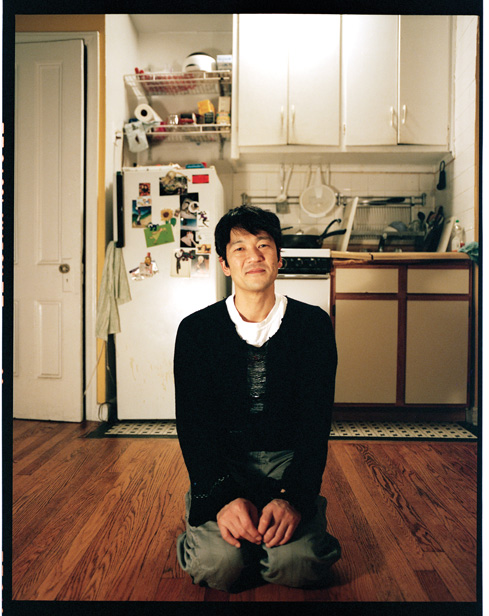 Spring 2012
Spring 2012|
Photo: Kikuko UsuyamaOn April 14, New York-based dancer-choreographer Kota Yamazaki brings his Fluid Hug-Hug dance company to Pittsburgh as part of The Warhol’s Off the Wall series. This performance will be one to watch, as Off the Wall rarely features dance, let alone the work of an international dance visionary. Trained by Japanese masters in the butoh tradition (an avant-garde dance form introduced in Japan in the late ‘50s), Yamazaki draws inspiration from many genres, including classical ballet and African dance, which he came to love during a year-long residency in Senegal. But the movements he creates are all his own. Before moving to Brooklyn in 2002, he led one of the largest dance companies in his native Japan, formed in the early 1990s when contemporary dance was still new to Asia. He gave it all up to come to New York, where he relishes being exposed to “more diversified dance forms and more diversified people.” Winner of the 2007 Bessie Award, the New York dance community’s equivalent of the Oscar, today Yamazaki revels in teaching the fluidity and universality of the language of dance, and in creating original works. He’ll debut his newest production, (glowing), this spring in Pittsburgh—a butoh-inspired collaboration with American and African dancers. Your dance seems both avant-garde and traditional. Is that your vision?That is really what I am exploring right now. By working with U.S. dancers who are not familiar with butoh and other traditional dance forms, I have been given the opportunity to investigate what butoh means to me through my work with them.
Dancing is very personal. But choreography is more for others in that I have to communicate my vision with others. In that sense, choreography gives me more fulfillment. But it is very important for me in working with other dancers not to force my style. I share myself with other dancers; I do not like to force. Is the reception to dance different depending on the country?It is very different in all parts of the world. For example, I spent quite a lot of time in Korea, and in Korea an academic background is very important, and they expect something that has more of an academic appeal. In Australia, I saw many more conceptual types of dance. And in Germany, I felt that long history of expressionism; everything is emotional. It is very … German! Can you put into words what it feels like to speak through your body in dance?For me, it is something that comes from inside, always. And it is also a reaction to the dancers around you, because I believe dance is a form of communication. So when I dance with others, I am communicating with them through my body. In the theater, the form of communication is the word. In dance, it is movement. When you teach others to dance, what do you tell them is most important?Observation. Observe everything—other people, the space around you, and the relationships between one thing and another. That is why I enjoy teaching workshops not just in a studio but in other kinds of environments. What will we see in (glowing)?Relationships as communication is a key element in the choreography. I invited two dancers from Ethiopia and Senegal and also two Japanese dancers and two American dancers—who had never met—and through this process, they will communicate and exchange ideas with each other. And there will also be an exchange between different dance forms. You still dance, but not with your company. Does age worry you as a dancer?It is a very strange feeling. Once I turned 50, everything became lighter, more easy. I am able to see more things. And the balance between the inside of me and the outside is really good. Dance has become more comfortable. When I was younger, I felt like I had to force something with my body, to always try something with my body. I was always trapped in that sense of forcedness. But now, I feel completely free.
|
Crossroads of Culture · Picturing Me · Unpacking Andy · The Galloping Ghost of the East Coast · President's Note · NewsWorthy · Artistic License: For Nature's Sake · Science & Nature: Domino Effect · First Person: Dine and Discuss · The Big Picture
 |
Copyright © 2017 CARNEGIE Magazine. All rights reserved. |

